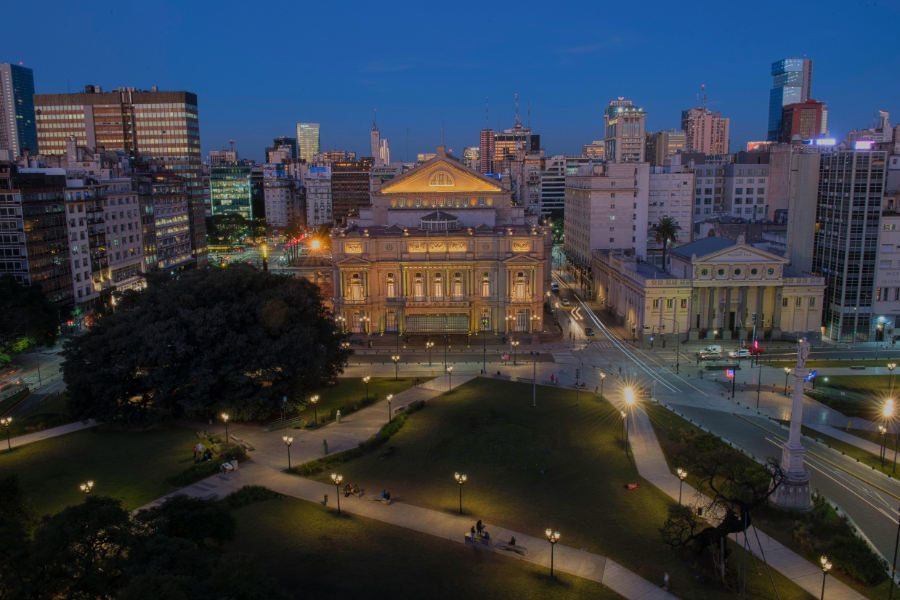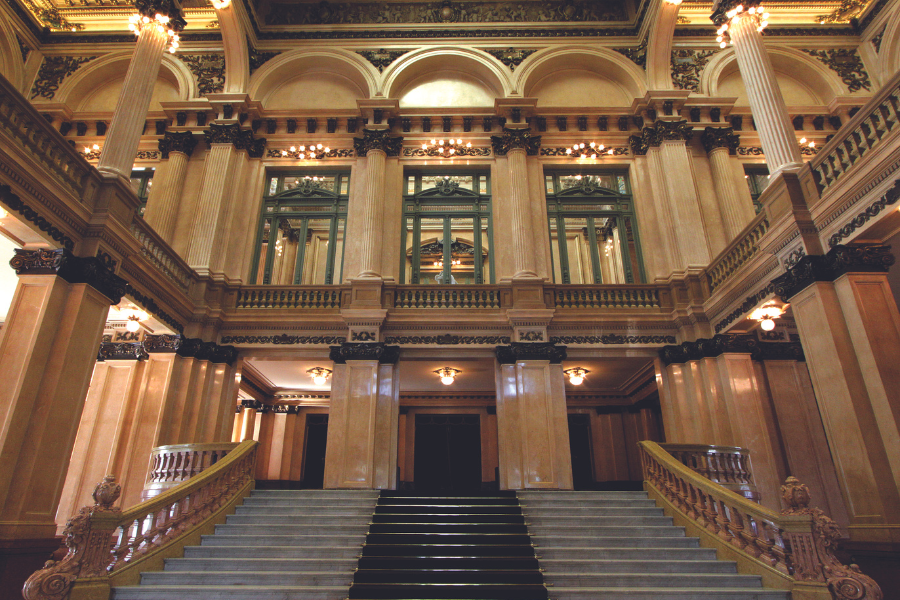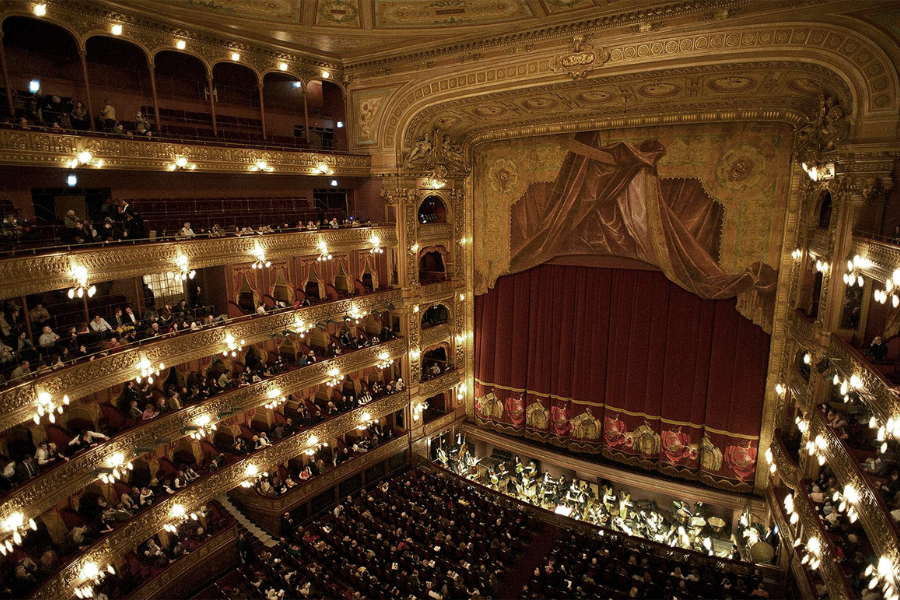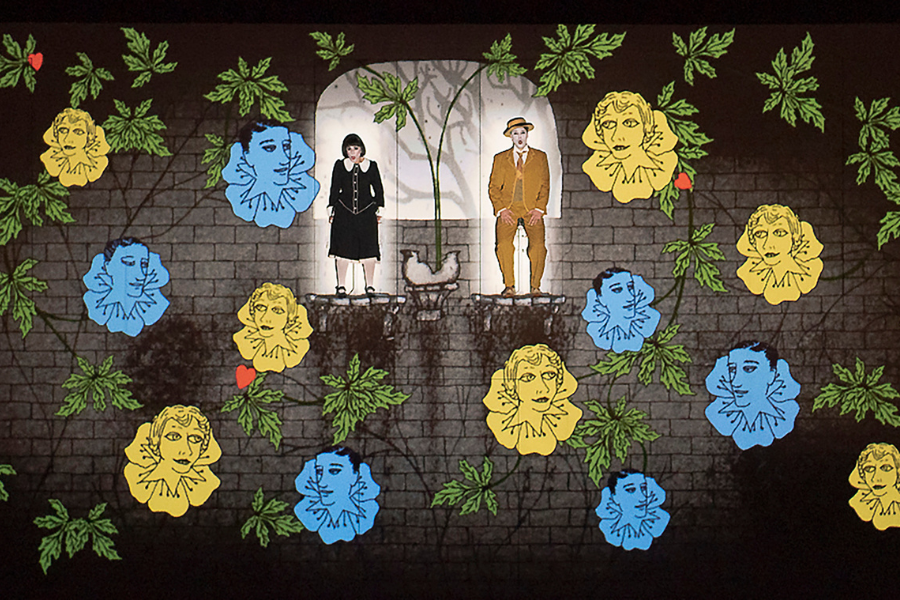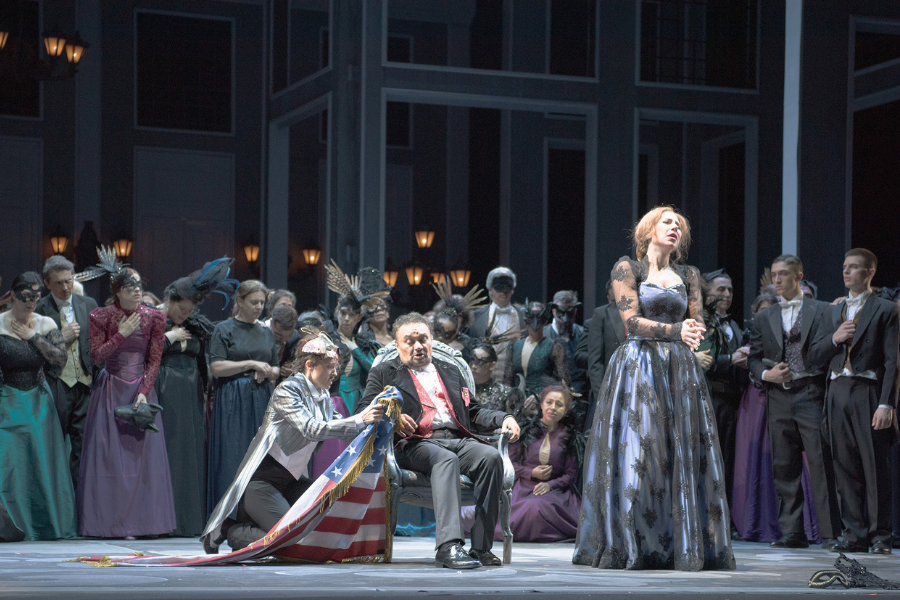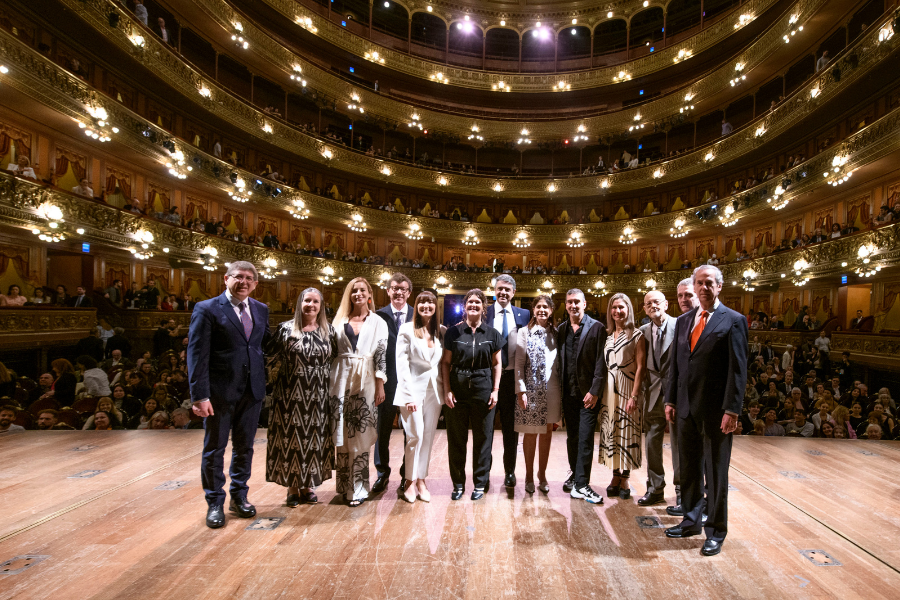Teatro Colón, a home for fans

Considered one of the most important theaters in the world due to its architecture, acoustics and the constellations that have passed through its stage, the Teatro Colón in Buenos Aires has as many anecdotes as soccer fields have in Argentina. In its facilities, in addition to artistic bodies such as the Orchestra, the Ballet and Stable Choir and the Buenos Aires Philharmonic Orchestra, a special type of public gathers, extremely fanatic, in love, addicted and nostalgic.
By Alvaro Molina R.
Cover photo: Juan Bruzza
“It was love at first sight,” says Luis, an Argentine in his late 60s, who was introduced to Buenos Aires’ Teatro Colón for the first time at age 27, when his brother-in-law at the time, a devoted opera fan, asked if he I wanted to accompany him. The performance was a Carmen about which he knew next to nothing about the singers or the production. Before attending, he thought that operas were a show that “started at five in the afternoon and ended at midnight.” Music had not played an important role in his life. Convinced by another enthusiast, he decided to go.
After entering through the “back door”, as the entrance on the west side of the theater is known, the one on Avenida Libertad, that “love at first sight” was also a reciprocated love. A love for the sound of the main room, for the size of the stage, for the dome with paintings by Raúl Soldi, for the orchestra pit with its capacity for more than 120 musicians, for its more than 2,000 seats. And music? It became an obsession.
Luis’ testimony is part of what the Argentine sociologist Claudio Benzecry collects in his book El fanático de la ópera (Siglo XXI, 2012), an account of different voices from audiences who have known Columbus at different times in his life, but that come together in one thing: an obsession and attendance at the most important theater in Argentina motivated by a love that, at times, leads to an addiction or a pilgrimage, like the one I had the opportunity to do in mid-May of this year. to see The Magic Flute, the first opera I attended as a child, at the age of 7. Now, it would be my first opera at the Colón.
Talking about Colón, beyond its architecture, patrimonial majesty and collection of great stars, is also talking about those who attend and discover there a special enthusiasm for opera, as characteristic as the emotion transmitted by a football superclassic, a rock concert national cuisine or a barbecue with friends and family. It is a fanaticism of attachment, commitment and consumption that seems to be eternal, as much as the tributes to Maradona or, at least, that it can become even broader than July 9.
A side show
Since its inauguration in 1908 with the presentation of Aida, the Teatro Colón has offered extensive opera seasons, in which the inevitable classics are programmed -La bohème, for example, has been presented more than 50 times- and, also, operas of avant-garde for the most seasoned fans like Die Soldaten by Zimmermann and Einstein on the Beach by Glass, recent examples of productions that defy tastes and preferences.
A parallel show to the operas, ballets and concerts, are the audiences that attend the theatre. In her book Palco, cazuela y paraíso (Editorial Sudamericana, 2002), the Argentine music journalist Margarita Pollini explains: “The marvelous spectacle provided by the attendees holds an extraordinary richness. Within the framework of this ‘golden and pink’ scenery, characters as diverse as they are well outlined coexist: the connoisseur, the neophyte, the fanatic, the critic, the snob, the passionate, the rich and the poor. The constant renewal of the cast means that each era has its characteristics, but the plot of this work has not changed much over the years.
The plot of that work that Pollini mentions begins in the first life that Columbus had between 1857 and 1888, the year in which the theater closed for the construction of a new room to replace the original one, originally located in the Plaza de Mayo. The construction of the new enclosure took more than 20 years, entrusted to the trident of architects Julio Dormal (Belgian), Francisco Tamburini and Víctor Meano (Italian, the latter).
Argentina was going through an era of modernization typical of Latin American nations in the second half of the 19th century, in the midst of the rise of bourgeois sociability engaged in a civilizing mission that was reflected in other buildings and locations in Buenos Aires designed by the same triad of architects: the Parque Tres de Febrero in Palermo, the mausoleum of General San Martín and the headquarters of the Rural Society.
After a process fraught with obstacles -which included the sudden death of Tamburini in 1899 and of his disciple Meano in 1904- Dormal was in charge of the final stage of construction, which finally concluded with the opening in 1908. The theater was ready to receive the public and, under the administration of the municipal government, represent the country as a whole.
As usually happens with the public of Colón, his fame is “relentless”, “feared”, “loved”, “respected” or “criticized”. Whether you sit in the middle of the audience, in the comfort of a box or at the top of paradise, those who attend the theater fill with quotes and anecdotes.
In its first year, the Colón was attended by those who represent the old story of stratification, told in many Latin American theaters: well-to-do landowners, commercial and industrial entrepreneurs, politicians and bureaucrats, diplomats and guests. This image of top executives and aristocrats was not the only one, however.
According to Benzecry, the popular classes, for a long time, “were also part of the audience”; there in the highest ranks were the emerging middle classes of the 20th century, as well as poor Italian immigrants, “who understood opera as part of popular culture” and “shared with the elite the tendency to attribute a sacred character to opera.”
The most “invisible” audiences, who do not fill the boxes, buy the Gran Abono or use the Colón corridors as a catwalk to parade their dresses and jewellery, opt for the cheaper gathering places, casserole and paradise, on foot. Margarita Pollini describes them as “the meeting point for true connoisseurs and fans of opera, against the reputation of snobs reserved for those in the audience.”
As usually happens with the public of Colón, his fame is “relentless”, “feared”, “loved”, “respected” or “criticized”. Whether you sit in the middle of the audience, in the comfort of a box or at the top of paradise, those who attend the theater fill with quotes and anecdotes, like the one that Pollini relates:
At the premiere of Aida in 1962, which took place as part of the Evening Ticket, Radamés sang a Uruguayan, José Soler, who had been a good tenor, but was no longer one. Soler not only had to be replaced by James McCracken after a performance, but his short height and presence aroused jokes from the audience. Seeing him appear in the triumphant scene, on foot and with such little humor, a voice rose implacably from the gathering:
“Hey, Radames! Did you miss the bus?
Tertulia and Cazuela in Paradise
Prior to any performance, the doors to the Colón lobby open at least one hour before the performance begins. Meanwhile, you can walk through the foyer and look at its octagonal glass dome or climb the Carrara marble steps, buy a gift in the theater shop or have coffee and pastries or sandwiches in the cafeteria.
There is a ritual, however, to enter the higher sectors, whose accesses are in the pedestrian sector of Viamonte streets (on the north side) and Tucumán (on the south side). Depending on the opera, attendees begin to gather several minutes, even more than an hour before the doors open to get the best possible view while standing.
In mid-May 2023, for a performance of The Magic Flute, at the entrance on Tucumán street, people could already be found waiting more than an hour in advance. There were mothers with their daughters commenting on a fashionable soap opera, whole families trying to keep the little ones from running down the street, curious young people who came after finishing classes at the university and talked about music theory and sheet music.
A guy came up to me, asking what time they open. “I don’t know, it’s my first time, but it should be soon”, I replied, trying to guess the time on the clock. He came from Rosario and it was also his first time. He must have been around 50 years old and was unaccompanied. “It’s a pleasure to come alone”, he told me. He was another fanatic, one who had crossed the 300 kilometers that separate Rosario from Buenos Aires to go see one of Mozart’s last operas.
There was more fanaticism waiting for the “back door”, the one that looks at Libertad avenue and Lavalle square. There, people of all ages took photos on the stairs or under the characteristic canopy, with its decorations made by the Zamboni foundry workshop especially for the Centennial of Argentina. Others, very elegantly dressed, waited for their companions or watched the theater program, commenting -some criticizing- the audacious staging proposed by the Berlin Comic Opera, inspired by film noir and German expressionism.
They are two faces from different sectors, but they share a passion, a semi-sacred relationship between music and personal expectations. In El fanático de la ópera, Benzecry describes the following episode:
A performance of The Barber of Seville featured a hippie singing the aria “Pace e gioia” (Peace and Joy), a disco dance, a West Side Story-inspired first act, and snippets from the popular Italian song “Volare.” At the beginning of the second act, when people already knew what was inevitably going to happen, someone from the upper deck shouted “Bring back the real Rossini. This is a scandal.”
Other anecdotes include the public splitting into factions; while one applauds, the other boos even louder. Or the almost start of a fight as a result of the modern staging of The Flying Dutchman, designed by the Argentine painter Guillermo Kuitca. In any case, they are shocking and passionate fanaticism, like when your soccer team player is making a fool of himself on the field or when your favorite band doesn’t play that song you went to see them for at the concert.
The eternal return
Many of us who have stepped foot in the Teatro Colón in Buenos Aires will be able to account for the love at first sight that Luis felt when he was there for the first time, at the age of 27. That it is one of the best theaters in the world, that it is one of the jewels delivered by the architects Tamburini, Meano and Dormal to the “Paris of South America”, that many of the great artists in history have been present there, that its audience It is one of the most demanding and that “heroes, pilgrims, addicts and nostalgic people” congregate in its room, stage and entrances, as Benzecry points out.
The theater is, in the end, where all these audiences coexist. Some form their own networks, get in touch to attend opera performances outside the Colón circuit or storm out with the scenery after a performance.
One day, while I was visiting the Colón Fábrica, the space where some of the productions made in the theater workshops are exhibited, I spoke with one of the guides who led the tour. We talked about the operas and shows that were held in that space, a gigantic warehouse in the heart of the La Boca neighborhood. In general, avant-garde and contemporary ones are programmed, such as Sun & Sea, a performance-installation that recreates a day at the beach and challenges the tastes of more traditional audiences.
I asked the guide about Einstein on the Beach, which would have its Latin American premiere in June. “She has me very excited!”, He answered me, with a fanaticism that shook his body. “I know that many of those who regularly go to the Colón probably won’t like it,” she added, “but despite that, they always come back to the theater. It’s like an addiction.”


